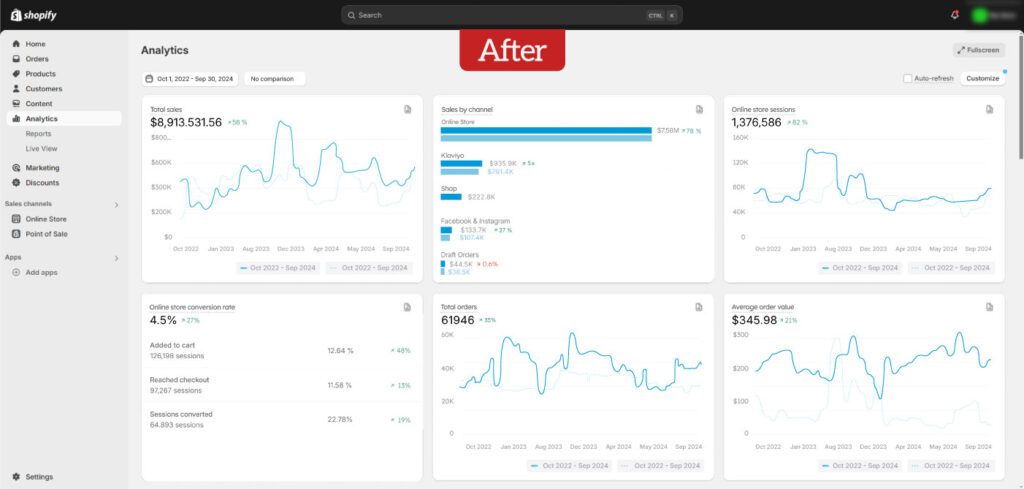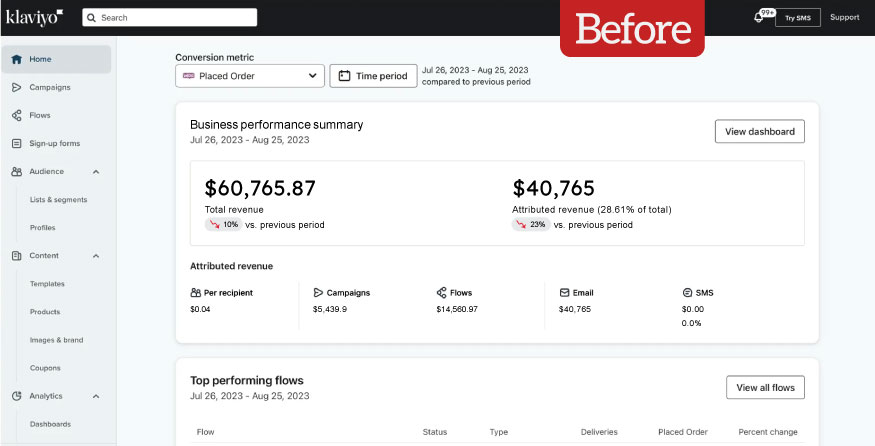Case Study
How we 2x conversion rates for an “Apparel and Fashion” e-commerce client

Results
2x to 4x
Conversion Rate
40%
Reduction in Cart Abandonment
20-30% ↑
Customer Lifetime value (CLTV)
20-30% ↓
Customer Acquisition Cost (CAC)
Meta Results
Conversion Rate Increased from 2x to 4x:
After implementing our solutions, the client saw a dramatic improvement in their conversion rates, effectively doubling them within a short period.
Significant Reduction in Cart Abandonment:
The rate of cart abandonment dropped by 40%, as customers experienced a more seamless and efficient checkout process.
Improved Customer Satisfaction:
Feedback from customers highlighted the ease of use and efficiency of the new checkout process, contributing to higher customer retention rates.
Client Background:
Our client, a prominent player in the apparel and fashion e-commerce space, was struggling with low online sales and a high cart abandonment rate. Despite having a well-designed website and a wide range of products, they noticed a significant drop-off in the checkout process and were experiencing conversion rates far below industry standards.
Challenges Identified:
- High cart abandonment rate
- Low online sales despite good website traffic
- Customer frustration during the checkout process
Our Approach:
We conducted a comprehensive CRO audit to uncover the root causes of these issues. Our approach was grounded in data-driven analysis and user behavior insights, utilizing industry-leading tools to gain a clear understanding of the customer journey.
Tools & Analysis:
01
FullStory Session Analysis:
We used FullStory to analyze user sessions and identify key pain points in the customer journey. This tool provided us with deep insights into how users were interacting with the website, revealing specific moments where frustration led to drop-offs.
02
Hotjar Heatmaps & User Feedback:
Hotjar was instrumental in identifying problematic sections on the website. Heatmaps showed us exactly where users were losing interest or getting stuck, while user feedback tools captured direct insights from customers about their frustrations.
03
Checkout Process Review:
Through our session analysis, we identified that the checkout process was the main bottleneck. Specifically, users were abandoning their carts on the second page of the checkout process due to:
- Complicated OTP Verification: Customers were required to enter OTPs (One-Time Passwords) that were often delayed, leading to incorrect entries and frustration.
- Lengthy Process: The checkout process was overly complicated, requiring too many steps and unnecessary information, which discouraged customers from completing their purchases.
- Complicated OTP Verification: Customers were required to enter OTPs (One-Time Passwords) that were often delayed, leading to incorrect entries and frustration.
04
Cart Abandonment Analysis:
We closely monitored cart abandonment rates and discovered that the abandonment primarily occurred at the OTP verification stage. The slow delivery of OTPs and the subsequent errors in OTP input were significant factors in customers leaving the site without completing their purchases.
Proposed Solutions:
01
Streamlined Checkout Process:
We redesigned the checkout process to minimize steps and eliminate unnecessary barriers. The new process was simplified to only require essential information, making it faster and easier for customers to complete their purchase.
02
Optimized OTP Delivery:
We recommended the implementation of a more reliable and faster OTP delivery system. Additionally, we suggested offering alternative verification methods, such as email or social media logins, to provide customers with multiple options.
03
A/B Testing of Checkout Flow:
Before rolling out the changes site-wide, we conducted A/B tests on the revised checkout process. The tests demonstrated a significant reduction in cart abandonment and confirmed that the simplified process was more effective.
04
Ongoing Monitoring with FullStory and Hotjar:
Post-implementation, we continued to monitor user behavior using FullStory and Hotjar to ensure the changes were having the desired effect. These tools allowed us to make further refinements based on real-time data.



